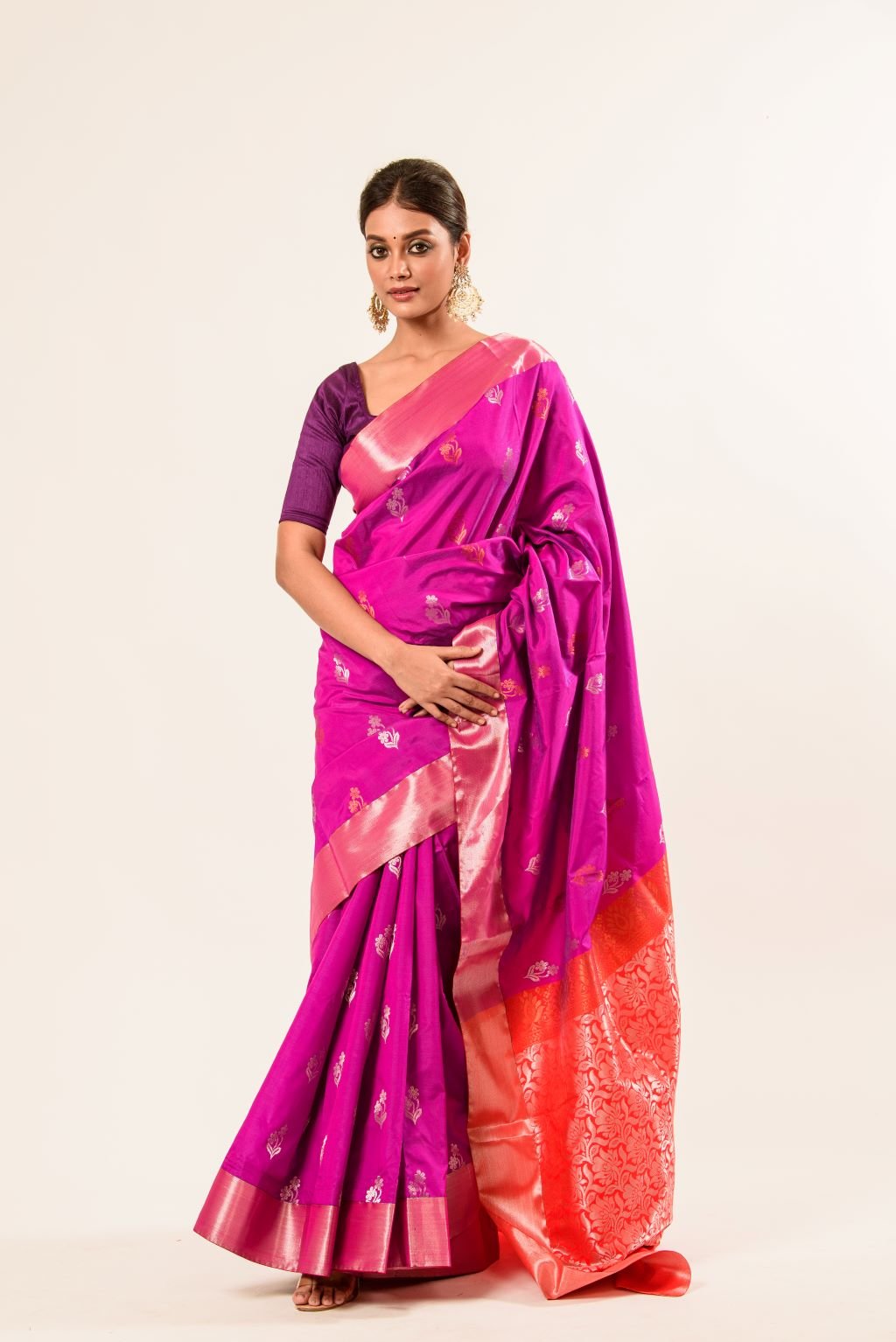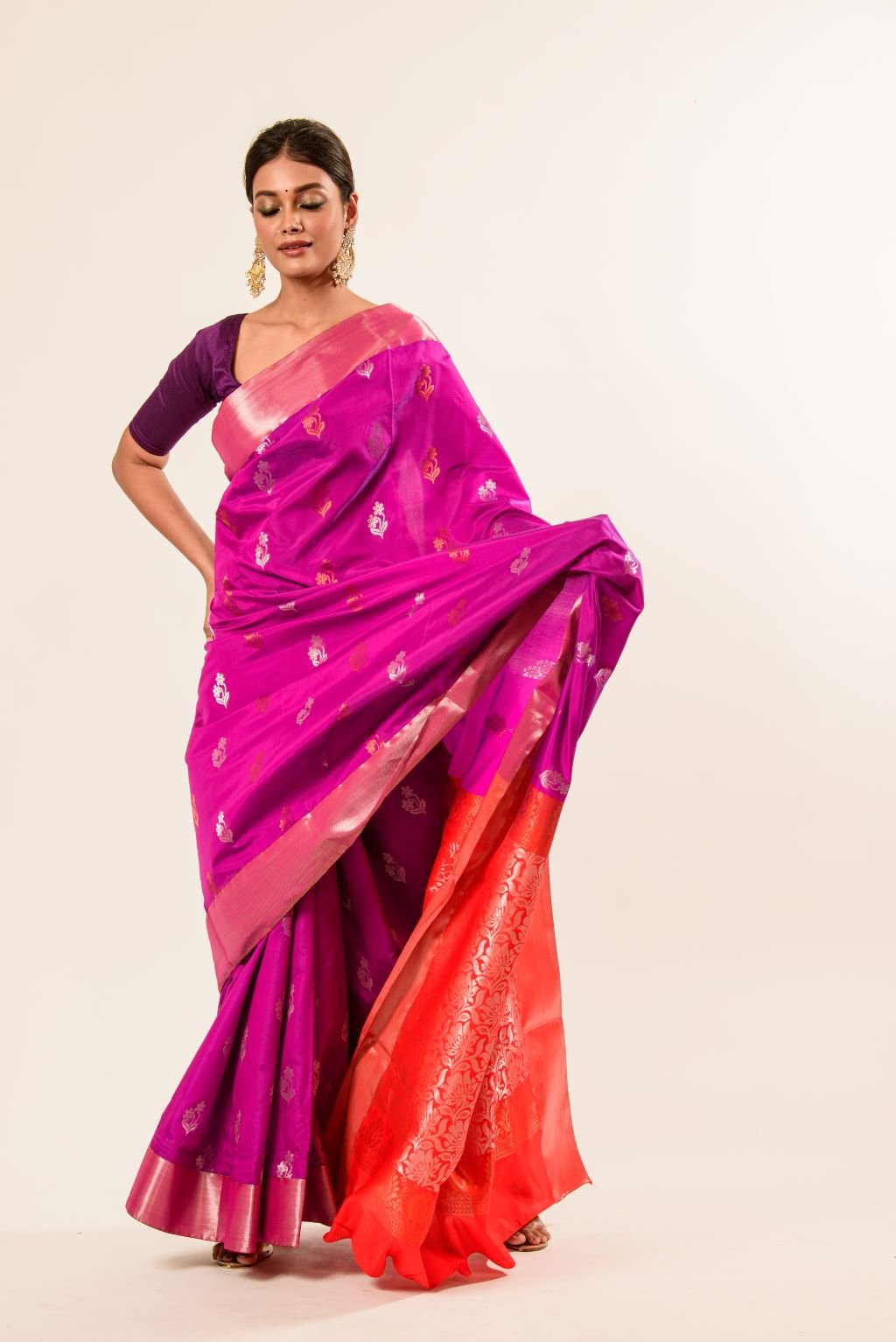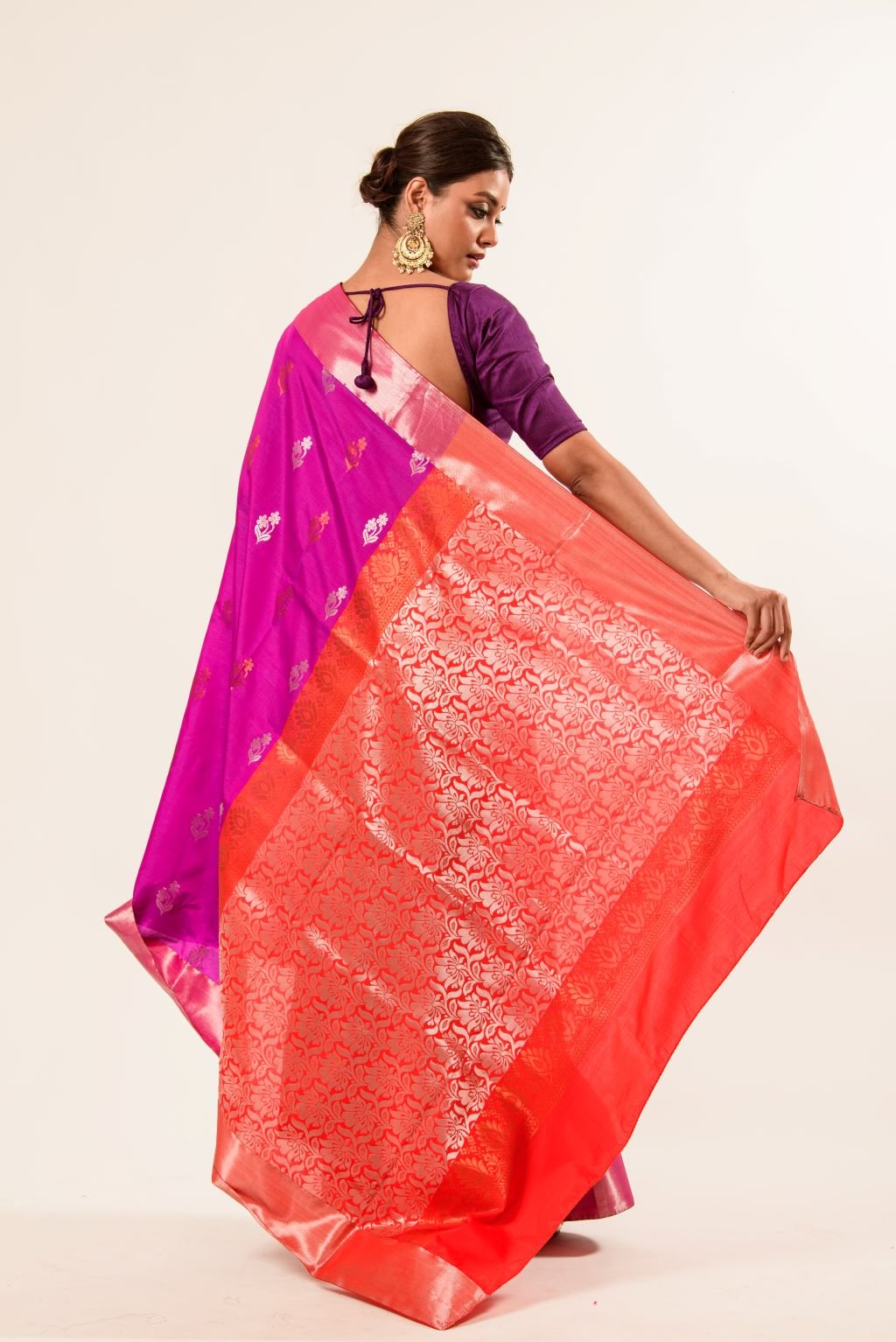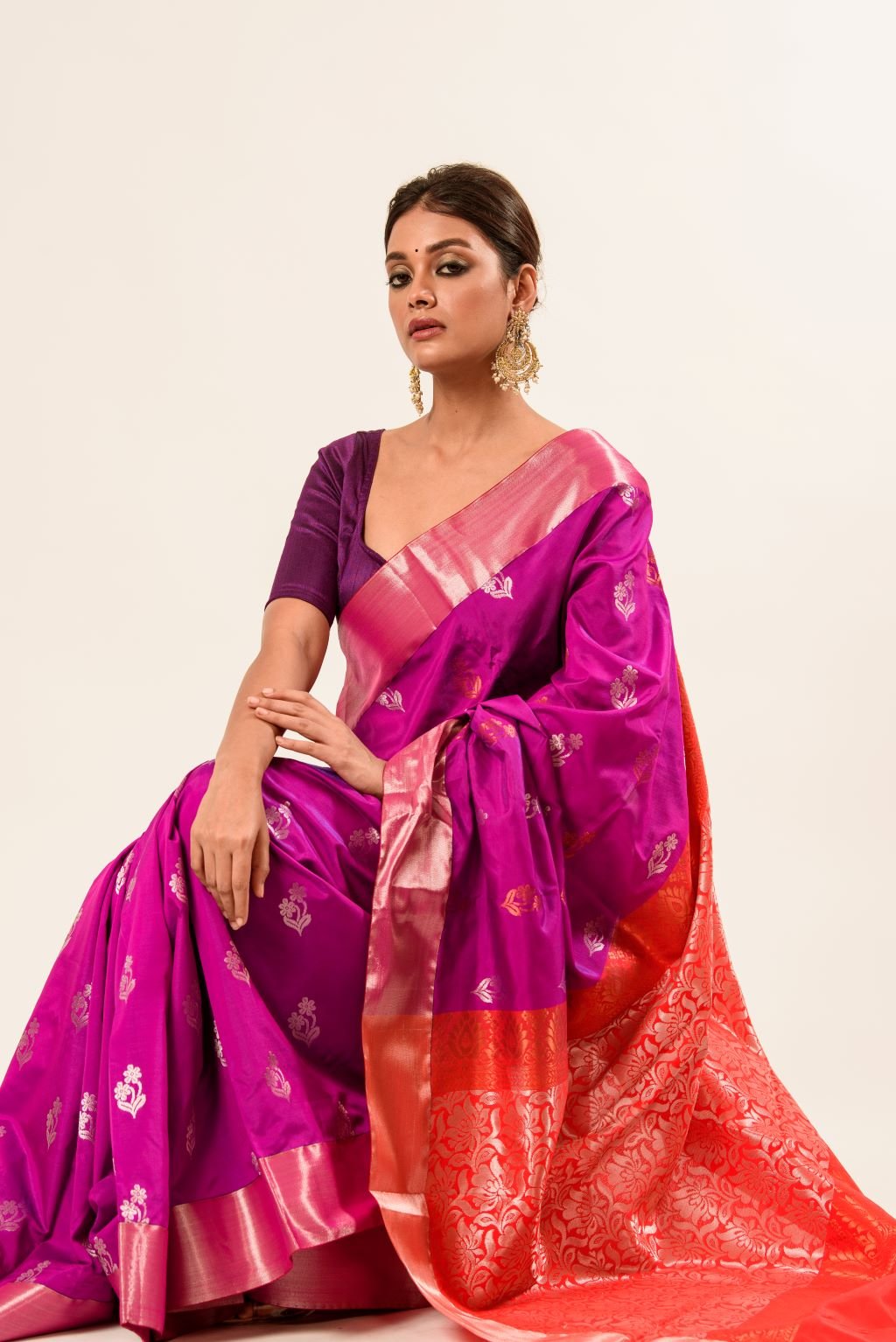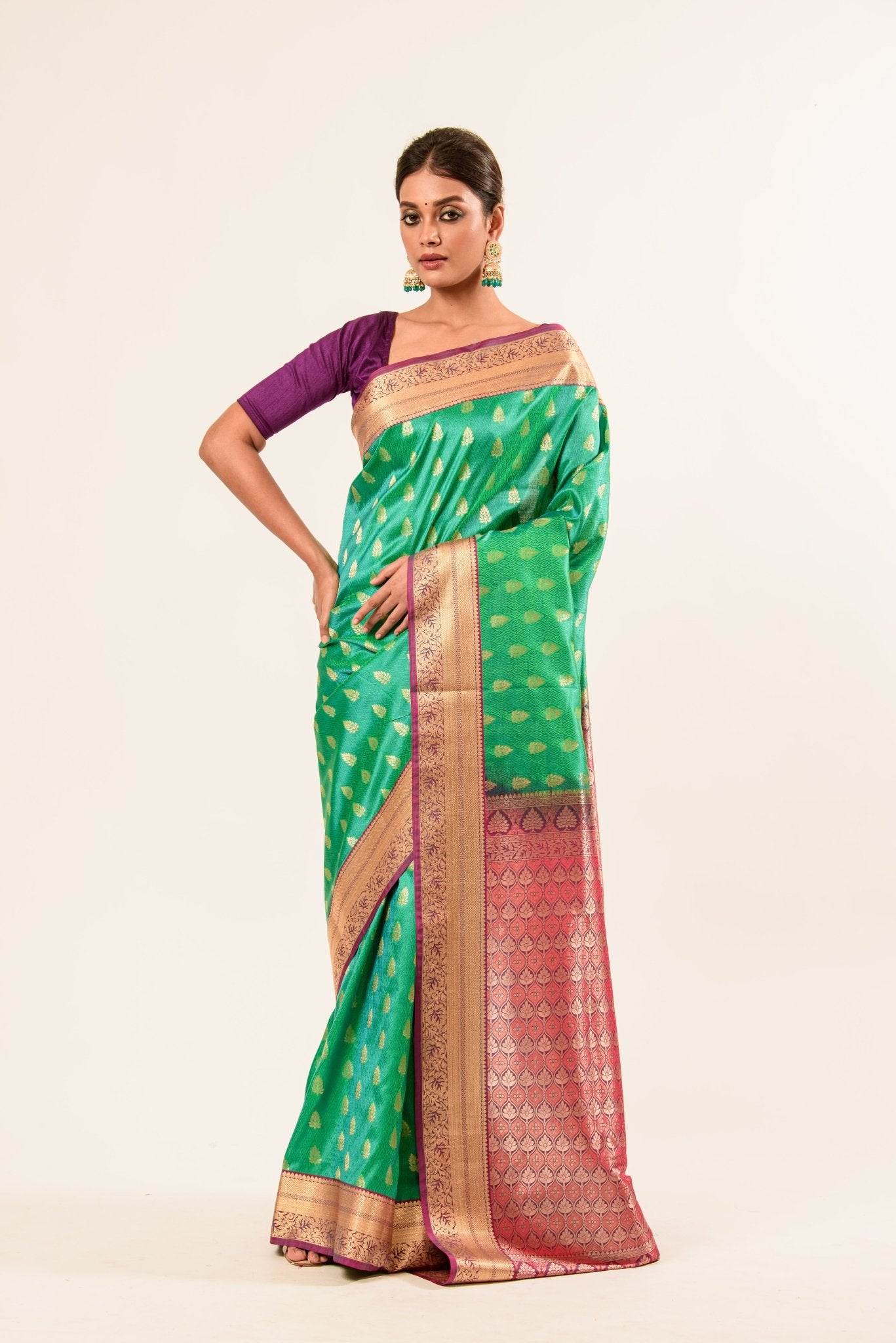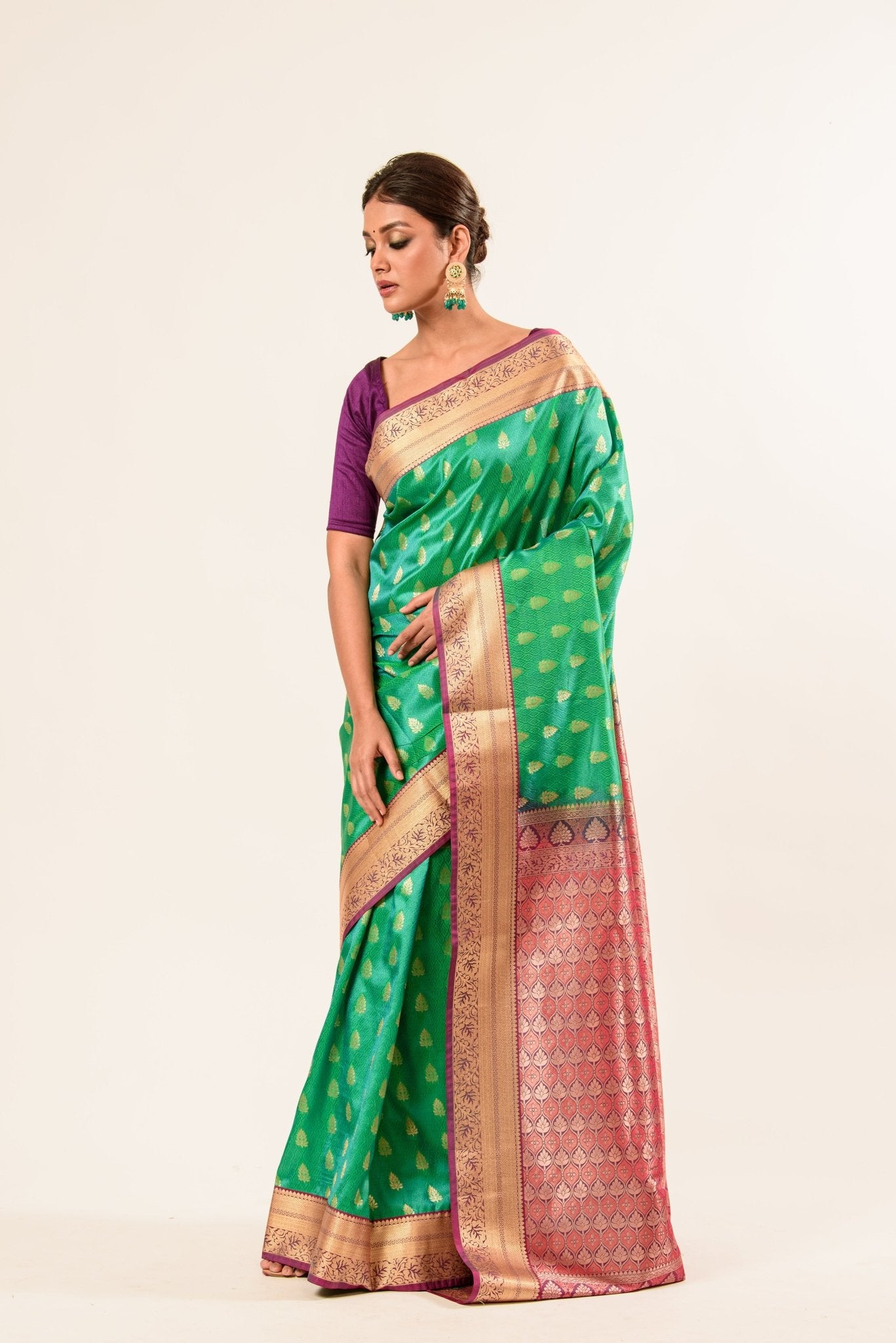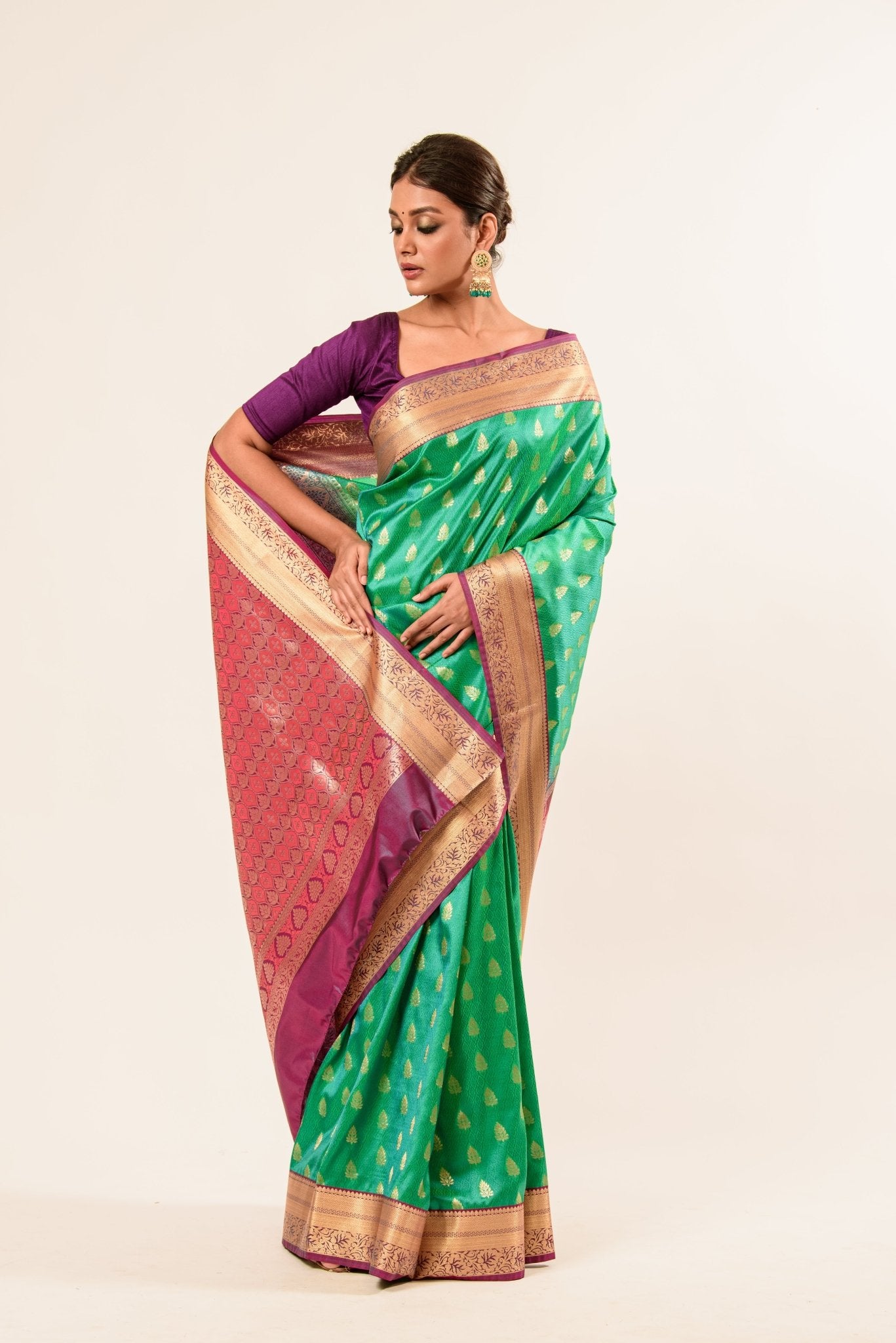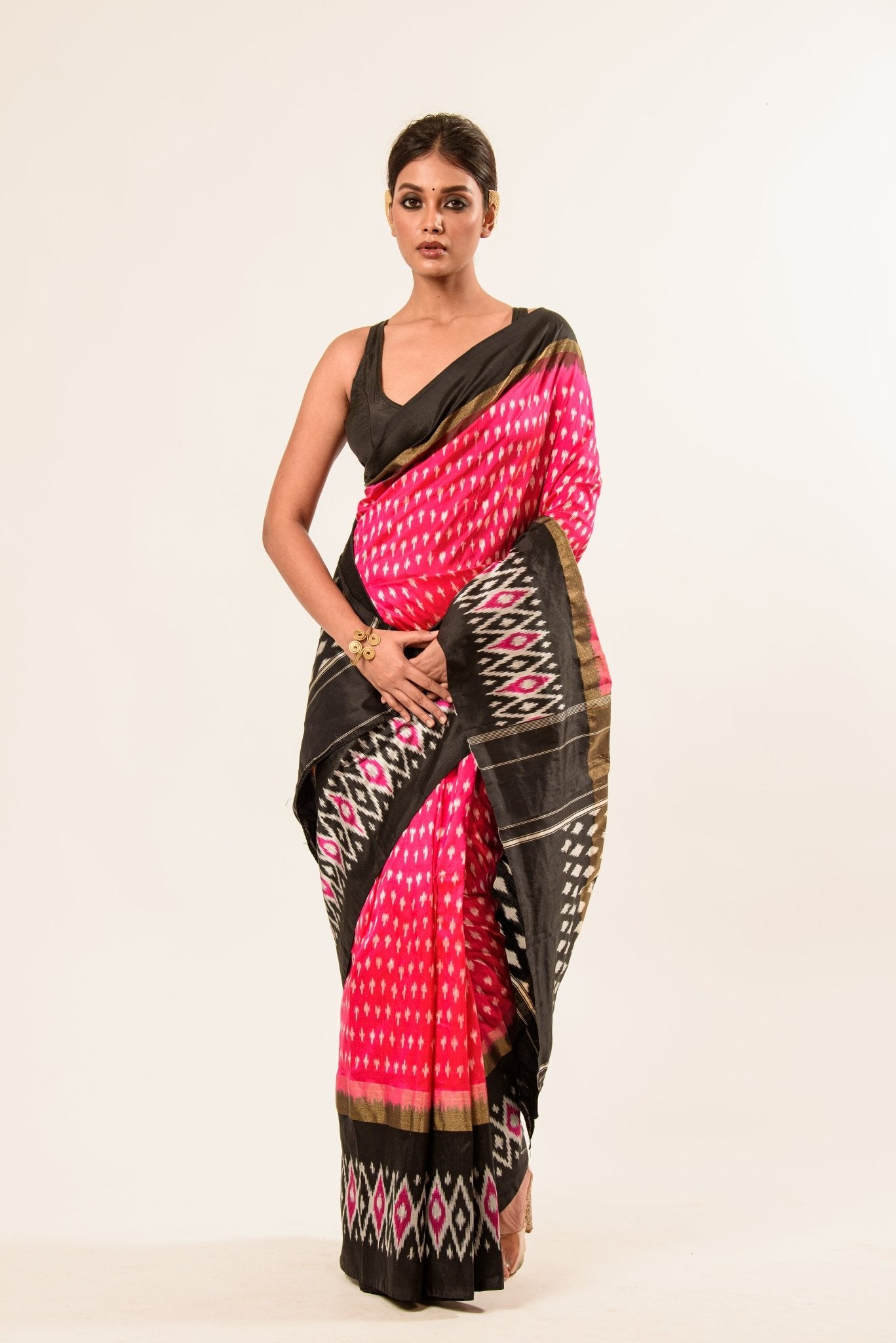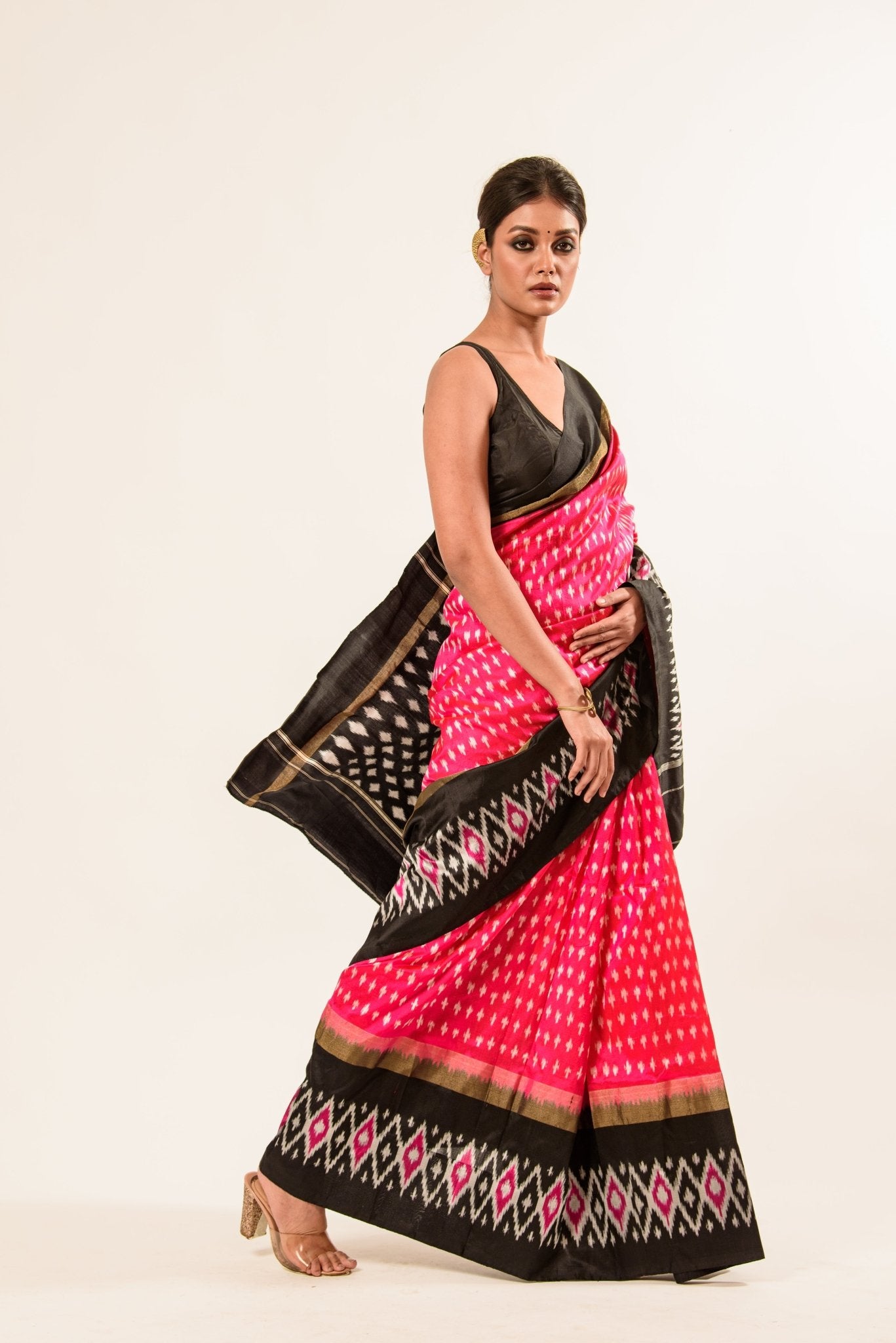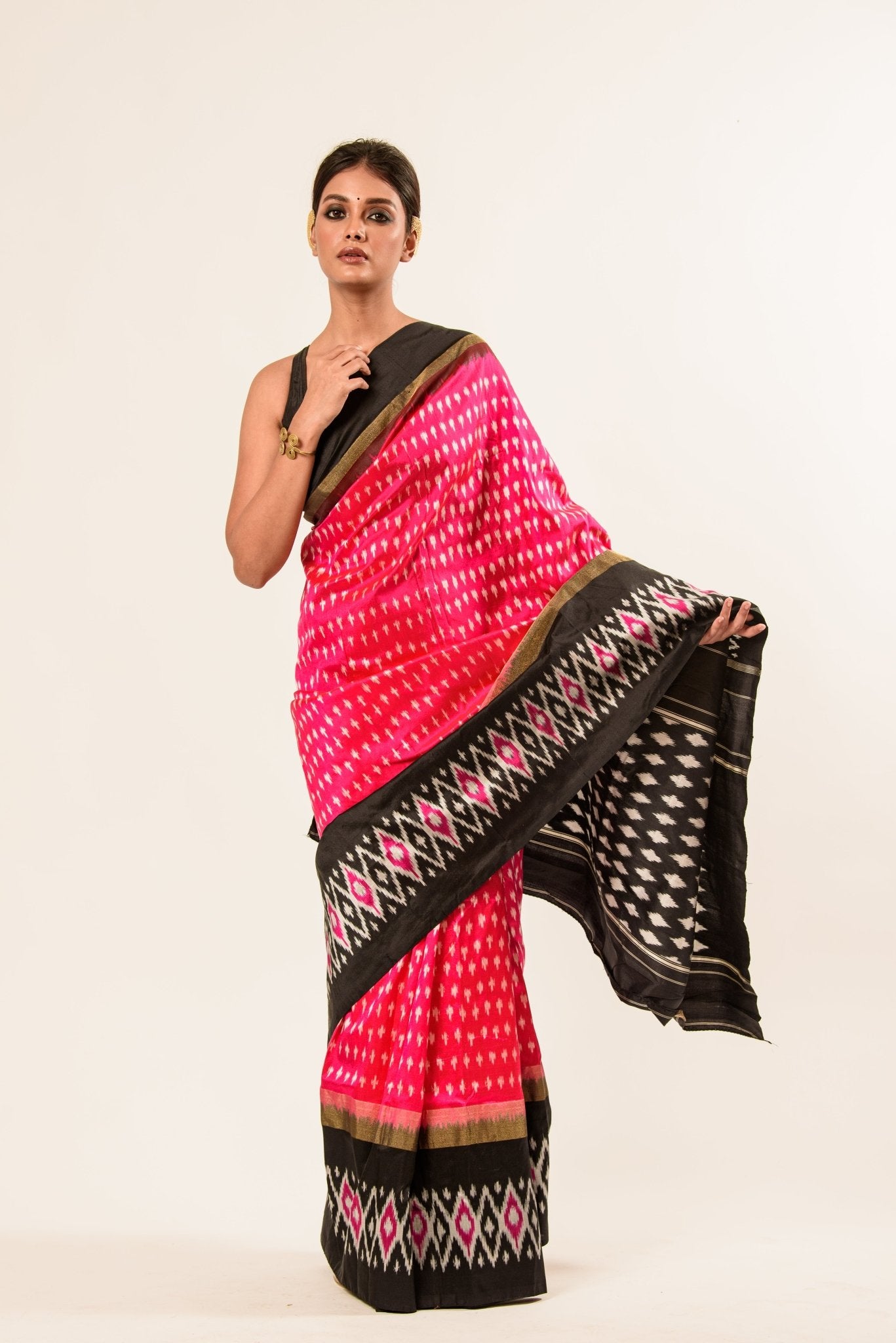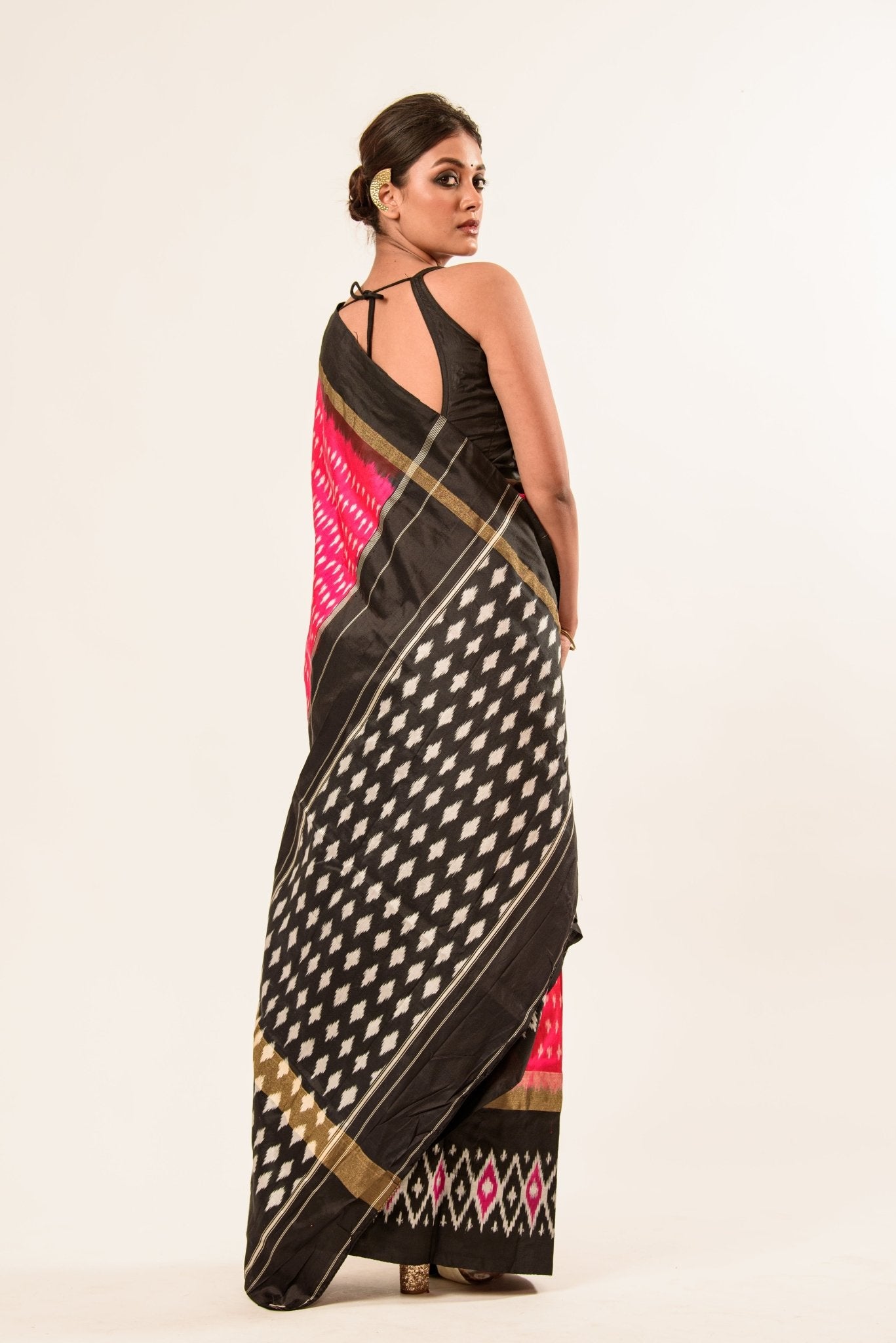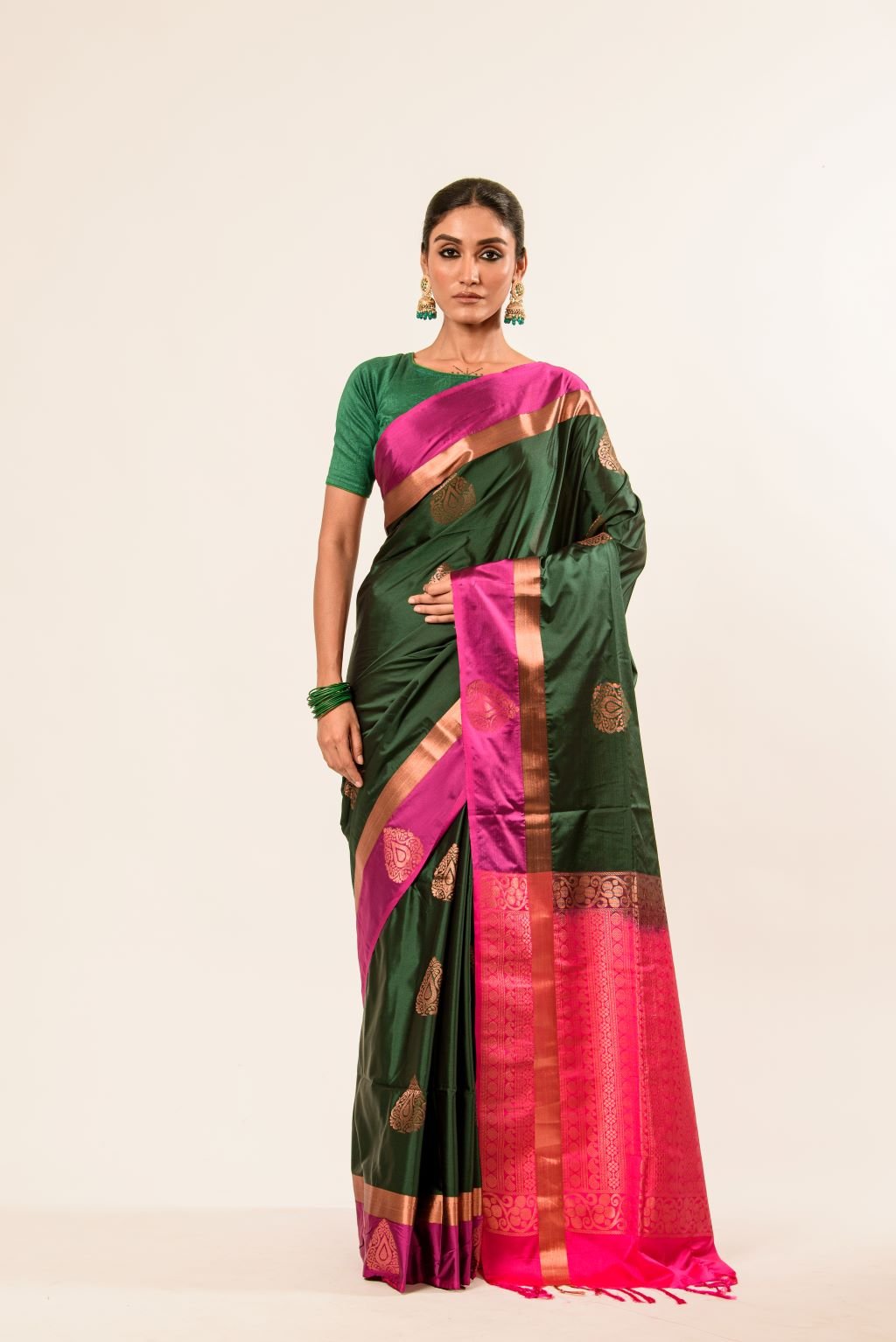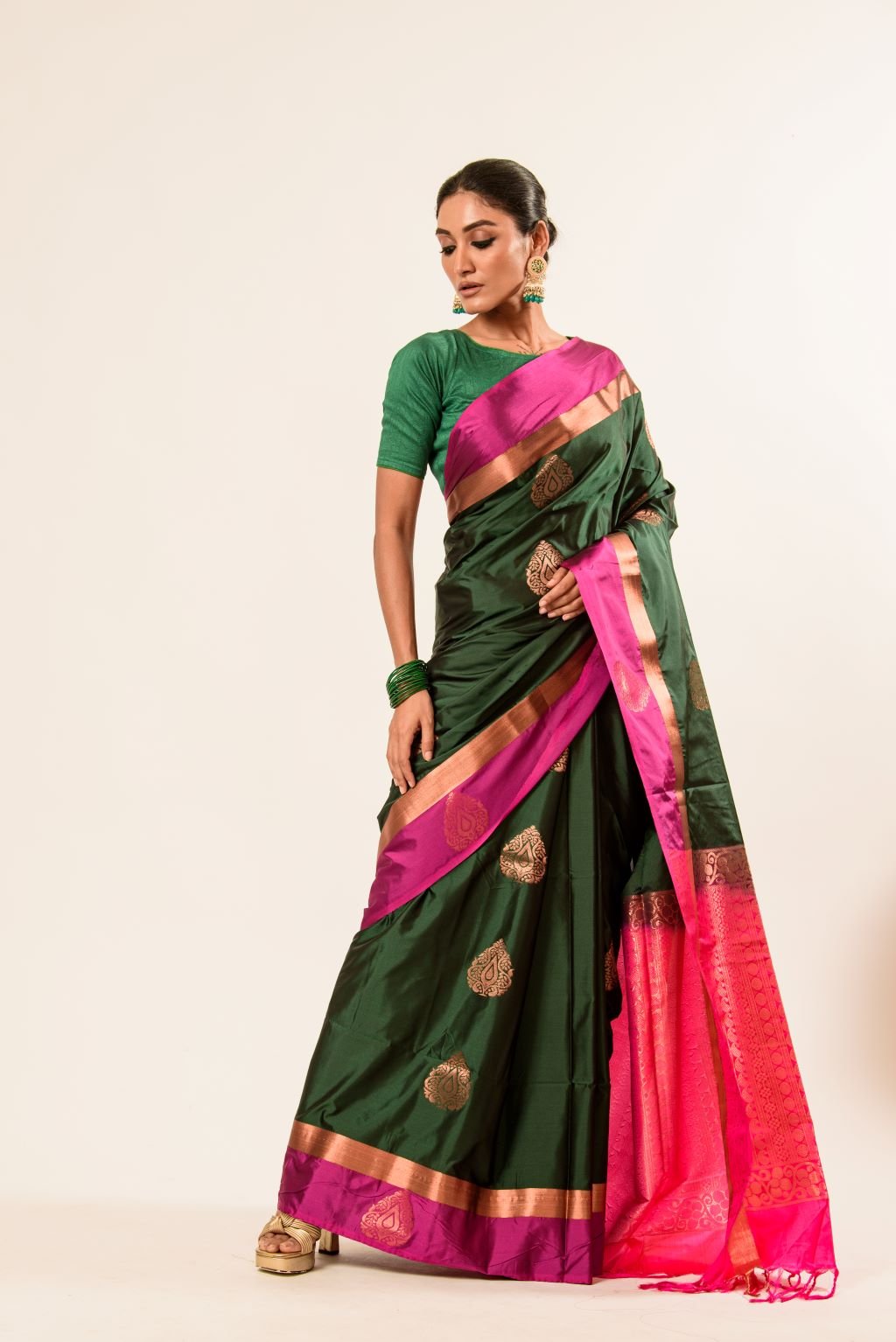Handloom sarees are the timeless face of Indian beauty, culture, and refinement. Weaved in ethnic patterns and traditional ways, handloom sarees possess a pure charm that makes them fit for regular use as well as lavish festivals. However, above all, drape is also highly crucial to derive maximum benefit from the elegance of a handloom saree. Whether it is a Tamil Nadu Kanjeevaram saree, Bengal Jamdani saree, or Odisha Tussar silk, a perfect draping can take your whole look to a trendy level. Pay attention to the below step-by-step guides on how to drape handloom sarees and be trendy.
1. Select the Right Fabric
The beauty of a saree starts from selecting the right fabric. Handloom sarees come in different textures such as cotton, silk, khadi, and linen. Every fabric falls differently—while cotton forms a shape-restricted figure, silk forms a drapey soft beauty. Choose one depending on your body type and occasion. Do also make sure that your blouse fits well, as it has an important role to play in making the saree look beautiful. A contrasting or decorated blouse will add to the beauty of the drape.

Image Source: Pinterest
2. Choose Neat and Well-defined Pleats
Pleating is the charm of a graceful saree fall. Handloom sarees, especially cotton or rigid silk sarees, need fresh pleats so that the saree is not heavy or uneven. Iron the saree beforehand so that pleating becomes easy. Pin 6–8 pleats at the front with a bobby pin. Once the pleats droop well, the saree falls into an even, royal fold.
 Image Source: Pinterest
Image Source: Pinterest
3. Drape in the Nivi Style for Classic Grace
The loveliest and most suitable way of draping a handloom saree is the Nivi drape that is common all over South India. In this, the pallu is draped over the left shoulder in such a way that it can either flow freely or be pinned to the back. This type of draping is suitable for weddings, office gatherings, or cultural events. Wear antique pieces of jewelry and do a low bun for a classy look.

4. Employ Bengali Drape for Cultural Sophistication
When you are wearing Bengal cotton or Jamdani saree, Bengali drape or Atpoure is a vintage as well as sophisticated look. Double pallu styling and box pleats enhance the cultural sophistication of handwoven sarees. Don it with red bindi, chunky silver or gold jewellery, and flowers in hair to appear quintessentially complete.

Image Source: Pinterest
5. Use a Belt or Waist Chain for Structuring
To provide your handloom saree with a modern appearance without sacrificing chicness, wear around your waist a belt or an old kamarbandh. Not only does this provide the saree with some structure, but also outlines your contours, thereby providing a more fitted appearance to the saree. This especially suits silk handloom sarees for events such as special occasions or black-tie events.

Image Source: Pinterest
6. Balance Accessories
Your jewelry must adorn and not overwhelm the handloom saree. Simple jhumkas, one beautiful necklace, or traditional bangles will do. Go for light makeup—kohl eyes, bold lipstick, and a subtle highlighter will do to give your look some zing without overwhelming the saree.

Image Source: Pinterest
Conclusion
Draping a handloom saree in proper draping style unleashes its beauty and elegance. Right from the traditional pleats to contemporary accessories such as belts and contemporary blouses, elegance is all about elegance and measurement. Bringing in a pinch of detail towards draping and styling details precisely, your handloom saree will convey it all about heritage and personal elegance—standing tastefully apart.
Shop Sarees By Colour
|
Saree Color |
Ideal Occasion |
|
Weddings, Engagements, Karva Chauth, Festivals |
|
|
Mehndi Ceremonies, Traditional Puja, Eco-themed Events |
|
|
Contemporary Gatherings, Office Parties, Subtle Elegance for Day or Night |
|
|
Haldi Ceremonies, Daytime Functions, Spring Events |
|
|
Baby Showers, Birthday Parties, Romantic Dinners |
|
|
Evening Parties, Corporate Events, Receptions |
|
|
Temple Visits, Traditional Ceremonies, Peaceful Gatherings |
|
|
Cocktail Parties, Formal Events, New Year Celebrations |
|
|
Navratri, Religious Events, Cultural Gatherings |
|
|
Engagements, Festive Celebrations, Theme Parties |
|
|
Summer Weddings, Brunches, Casual Daytime Gatherings |

